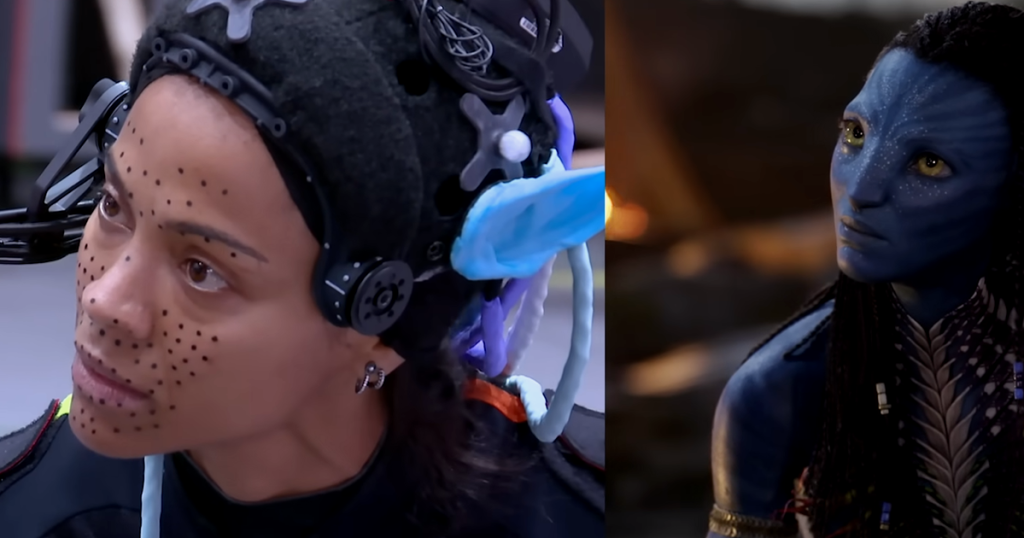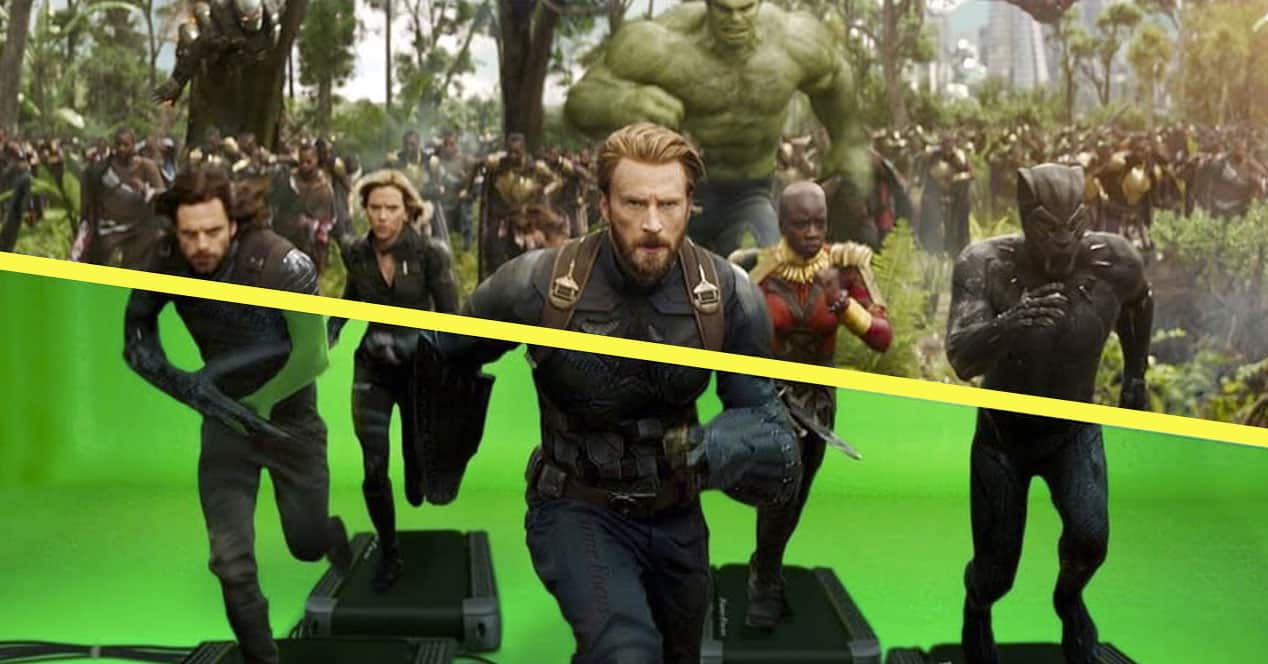The Impact of CGI: How Technology Is Revolutionizing Movie Special Effects
Computer-generated imagery (CGI) has transformed the way movies are made, creating visual effects that were once unimaginable and pushing the boundaries of storytelling. The advancement of CGI has revolutionized the film industry, allowing filmmakers to bring their most ambitious visions to life. Whether it's creating realistic creatures, stunning landscapes, or mind-bending action scenes, CGI has opened up a world of creative possibilities. In this article, we’ll explore how CGI has impacted movie special effects and why it's such an essential tool in modern filmmaking.

The Evolution of CGI: From Simple Beginnings to Cutting-Edge Technology
CGI's journey began in the 1970s, with early experiments in computer graphics used for basic visual effects. However, it wasn’t until the 1990s that CGI began to make a significant impact on mainstream cinema. Films like Jurassic Park (1993) and Terminator 2: Judgment Day (1991) demonstrated the potential of CGI, bringing dinosaurs and futuristic robots to life in ways that were never before possible. These groundbreaking films showcased how CGI could seamlessly blend with live-action footage, creating effects that felt both realistic and believable.
As the technology progressed, CGI became increasingly sophisticated. In the 2000s and beyond, CGI began to take on more complex tasks, such as digital doubles, environments, and creatures. Movies like Avatar (2009) and The Avengers (2012) pushed the envelope even further, using CGI to create entire worlds and characters that felt completely real. Today, CGI is one of the most vital tools in the filmmaker’s toolbox, with virtually every blockbuster using it in some capacity.
CGI and the Creation of Realistic Characters
One of the most significant contributions of CGI has been in the creation of lifelike characters, both human and non-human. With advancements in motion capture technology, filmmakers can now capture actors' movements and facial expressions with incredible accuracy, allowing for more realistic CGI characters that interact seamlessly with live-action elements.
Digital Humans:
CGI has allowed filmmakers to create digital characters that look and behave like real people. The most notable examples of this are the characters of Gollum from The Lord of the Rings series and Thanos from Avengers: Infinity War. Using motion capture and sophisticated CGI techniques, actors' performances are mapped onto digital avatars, giving them a lifelike presence on screen.
Another breakthrough in CGI technology is the creation of digital doubles of actors, used when an actor is unable to perform a particular scene due to physical limitations or safety concerns. This technology has been used in movies like The Matrix Reloaded (2003) and Guardians of the Galaxy (2014), where actors were replaced by CGI models in high-action sequences, keeping the audience immersed in the story without losing realism.
Non-Human Characters:
CGI has also brought to life some of the most memorable non-human characters in film history. The creatures from Jurassic Park are perhaps the best example, where CGI was used to create lifelike dinosaurs that interacted with their environment and the human characters. In more recent films like The Jungle Book (2016), CGI was used to create the various animals and the environment in which they lived, making the world feel fully immersive despite being entirely computer-generated.
Seamless Integration of CGI with Live Action
One of the biggest challenges in early CGI films was the ability to make computer-generated elements look realistic when combined with live-action footage. In the past, CGI often felt out of place, with characters or objects appearing artificial or disconnected from the world around them. However, advances in CGI technology have led to a more seamless integration between CGI elements and live-action shots.
Lighting and Texturing:
With the introduction of sophisticated rendering techniques, CGI elements can now reflect light, texture, and shading just like real objects. This allows CGI characters or environments to match the lighting and atmosphere of a scene, creating a more natural look that doesn’t disrupt the immersion of the audience. For example, in Avatar, the glowing plants and creatures in the alien world of Pandora seamlessly integrate into the scene, creating a believable environment despite being entirely computer-generated.
Virtual Production:
Virtual production techniques, such as those used in The Mandalorian series, have also revolutionized how CGI is incorporated into filmmaking. Using a combination of real-time CGI and LED screens, filmmakers can create realistic virtual environments that actors can interact with on set, drastically improving the integration of CGI with live-action performances.
Enhanced Visual Effects in Action and Fantasy Films
CGI has become synonymous with high-energy action sequences and larger-than-life fantasy worlds. Films in the action, superhero, and fantasy genres rely heavily on CGI to create breathtaking scenes that defy the laws of physics and the limitations of the real world.
Action Sequences:
In modern action films, CGI has been used to create stunning fight scenes, explosions, and stunts that would be impossible, too expensive, or too dangerous to film in real life. Movies like The Matrix (1999) revolutionized the genre with groundbreaking bullet time effects, where the camera appeared to freeze while the action continued. Today, CGI is used in everything from superhero films like Spider-Man: No Way Home (2021) to fast-paced car chases in The Fast & The Furious series.
Fantasy Worlds:
CGI has also allowed filmmakers to create entire fantastical worlds that push the boundaries of imagination. In Harry Potter and the Sorcerer’s Stone (2001), CGI was used to bring magical creatures like the Hippogriff to life, and in The Lord of the Rings trilogy, CGI helped create sprawling, mythical landscapes that could not be replicated in the real world. CGI continues to be a vital tool for bringing fantastical settings and creatures to life in films like Doctor Strange (2016) and Star Wars: The Force Awakens (2015).
The Impact on Movie Production and Cost Efficiency
While CGI has significantly improved the quality of special effects in films, it has also streamlined movie production in many ways. Filmmakers no longer need to rely on physical sets, props, or elaborate practical effects for certain scenes. CGI can create environments, creatures, and effects at a fraction of the cost, allowing for greater creativity and less reliance on physical resources.
For example, in a film like Inception (2010), complex visual effects such as the rotating hallway or the folding cityscape would have been nearly impossible or prohibitively expensive to create using practical effects. CGI not only made these scenes possible but also ensured that they were executed seamlessly within the film.
Additionally, CGI can be used in post-production to fix or enhance shots that were not possible to achieve during filming. This flexibility allows filmmakers to have more control over their final product and create films that are as close to their original vision as possible.

The Future of CGI in Filmmaking
As technology continues to advance, the potential for CGI in filmmaking is limitless. In recent years, the development of real-time rendering and virtual reality (VR) has allowed for more interactive experiences and the possibility of fully immersive worlds. As the technology improves, CGI will continue to push the boundaries of storytelling, enabling filmmakers to create even more realistic, fantastical, and mind-bending experiences.
AI and Machine Learning:
Artificial intelligence (AI) and machine learning algorithms are already being used to assist in CGI production, improving the speed and efficiency of visual effects work. These technologies could help create more detailed textures, predict lighting changes, and even automate some of the more tedious tasks involved in CGI creation.
Enhanced Visual Realism:
With the advent of ray tracing, a technique that simulates how light interacts with objects in real time, CGI will continue to improve in terms of visual realism. This will make computer-generated characters, environments, and objects look even more lifelike, further blurring the line between what’s real and what’s created.
Conclusion
The impact of CGI on movie special effects has been nothing short of revolutionary. From creating lifelike characters and environments to enhancing action sequences and enabling entirely new forms of storytelling, CGI has become an essential part of modern filmmaking. As technology continues to evolve, the possibilities for CGI in cinema are limitless, ensuring that the film industry will keep pushing the boundaries of visual effects and storytelling for years to come. Whether it's making the impossible possible or transforming the way we experience stories, CGI is shaping the future of cinema.












